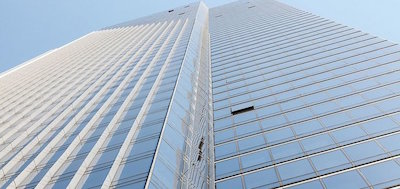 The Leaning Tower of Pisa was not designed to lean. Neither was the Millennium Tower in San Francisco, but according to several sources, it is not only leaning 2 inches, but has sunk 16” since its completion in 2009. Two inches doesn’t seem like much, but when you live in one of the top award winning residential towers in the world, two inches might as well be two feet. No, I take that back. Two inches of lean in one of the highest earthquake zones in the world is a disaster waiting to happen. In this case, the tower at 301 Mission Street, leaning 2 inches and sinking double the amount that it was projected to in the next 50 years is no small matter and if nothing else is a legal disaster in the making.
The Leaning Tower of Pisa was not designed to lean. Neither was the Millennium Tower in San Francisco, but according to several sources, it is not only leaning 2 inches, but has sunk 16” since its completion in 2009. Two inches doesn’t seem like much, but when you live in one of the top award winning residential towers in the world, two inches might as well be two feet. No, I take that back. Two inches of lean in one of the highest earthquake zones in the world is a disaster waiting to happen. In this case, the tower at 301 Mission Street, leaning 2 inches and sinking double the amount that it was projected to in the next 50 years is no small matter and if nothing else is a legal disaster in the making.
The owners of the condominiums in this award winner have hired four legal firms to represent them in court. How can they afford to do that? Good question. It seems that folks like Joe Montana and Hunter Pence have bought units there and as you might imagine, there are some confidential owners who have bought units for investment purposes in this the 4th tallest tower in San Francisco.
The combined filings to this point amount to $500 million for a building that 6 years ago was said to have cost $350 million.
How could or did this happen? We will surely find out in court filings but there are some basic facts that exist. According to Wikipedia, the Millennium Tower is a 58 floor, 645-foot tall concrete frame residential condominium building developed by Millennium Partners of New York City.
The project consists of the subject tower, a smaller 12-story tower with 434 parking spaces in a subterranean garage. The two towers are connected by a two-story atrium. The taller tower consists of 366 residential units and the lower tower consists of 53 units.
The project was designed by Handel Architects, engineered by DeSimone Engineers and built by Webcor Builders. The project’s last unit was sold in 2013. The total cost for the project was listed at $600 million, but an article written by J.K Dineen in the San Francisco Times on April 5, 2013 was headlined “Millennium Tower in San Francisco is a $750M sellout."
Those are some of the facts. Now for the “lean.”
Several points of note include:
First, according to an article on SFGate.com, the building is built on landfill, and the site sits outside to original shoreline of San Francisco Bay. Landfill is not normally stable unless it is compacted, so most engineers would insist that the building’s supporting piers extend to bedrock, in this case, some 200 feet deep. From the documents, we are told that during the final drawing of the substructure of the tower, the developer’s might have decided to “engineer out” the high cost deep piers and substitute 80 foot deep piers under a concrete mat.
Second, the building profile is narrow, with floor plates of 14,000 square feet as opposed to most high-rise office buildings nearby that are 25,000 square feet.
Third, the building has a concrete frame and floors. This design affords wide-open views and few, if any, columns. The issue is that the concrete and the reinforcing bars needed to stiffen the foundation make the building very heavy. That requires the structural engineers to beef up the foundations and supporting structure to transfer the weight of the building it holds to the surrounding ground.
Fourth, the Transbay Joint Powers Authority (TJPA) is building a terminal in the street next to Millennium Tower. The TJPA began excavating in 2010 for this major taxpayer funded transportation terminal. The developers have filed claims against the TJPA saying that its project has caused this new “Leaning Tower of San Francisco. The TJPA has adamantly denied responsibility in an August 1st press release.
Fifth, according to a study commissioned by TJPA and submitted by Arup in 2009, when TJPA was concerned that their excavation would impact Millennium Towers, the building had already sunk 10 inches and was tilted as well. The TJPA took additional steps and spent $58 million to erect buttress walls in their excavation to buffer the Millennium Tower from any impact of the excavation. Seismic data, according to TJPA, has shown that “the buttress was entirely effective in preventing excessive movement of the Tower due to the excavation for the Transit Center.” This situation, while serious, will take some time to get through the courts. The Owners will obviously sue the developers, designers, engineers and contractors. The developers will likely sue the TJPA and that means years of litigation to place the blame and probably the fame on the party responsible for the Leaning Tower of San Francisco.
You can read more and follow the legal proceedings here.


